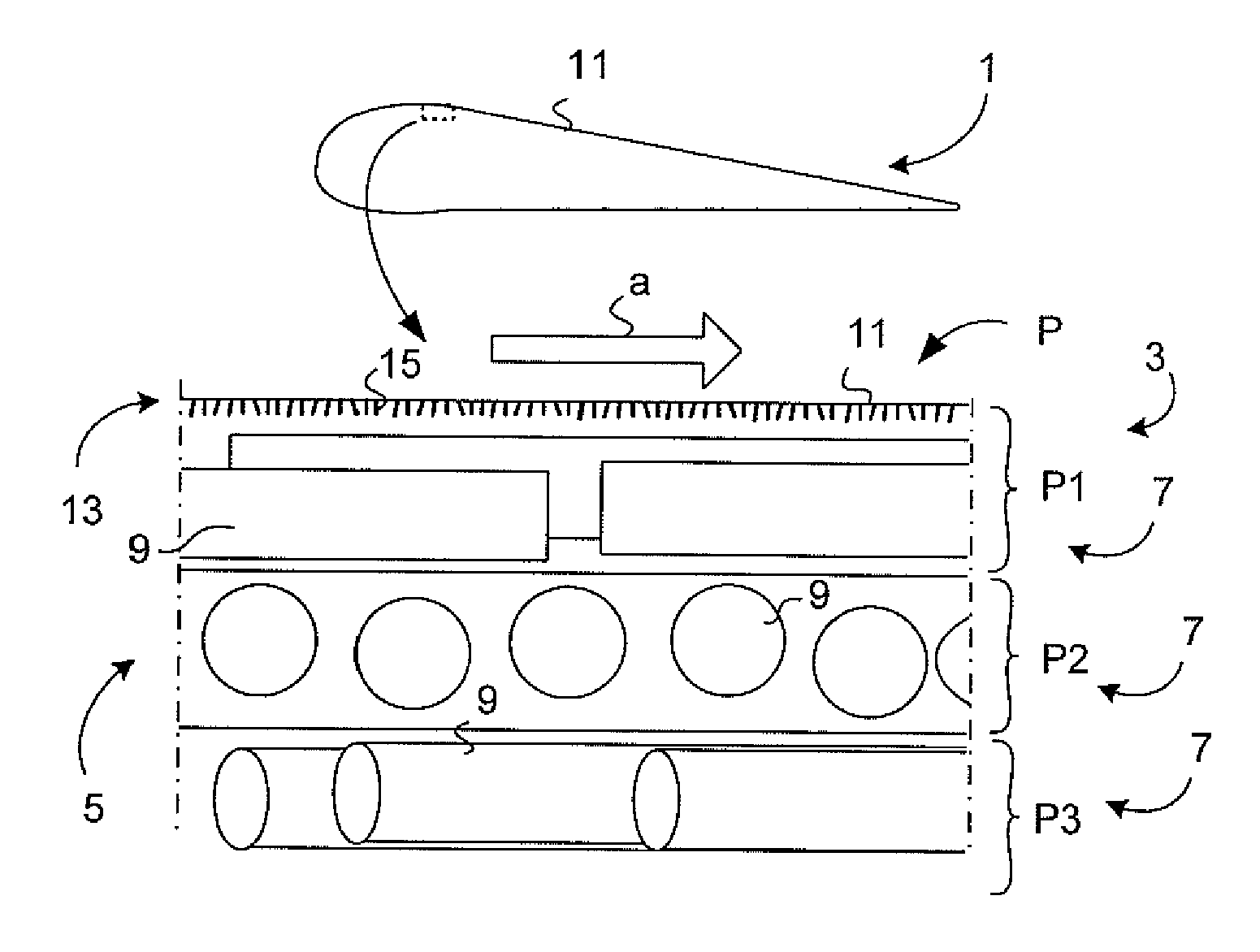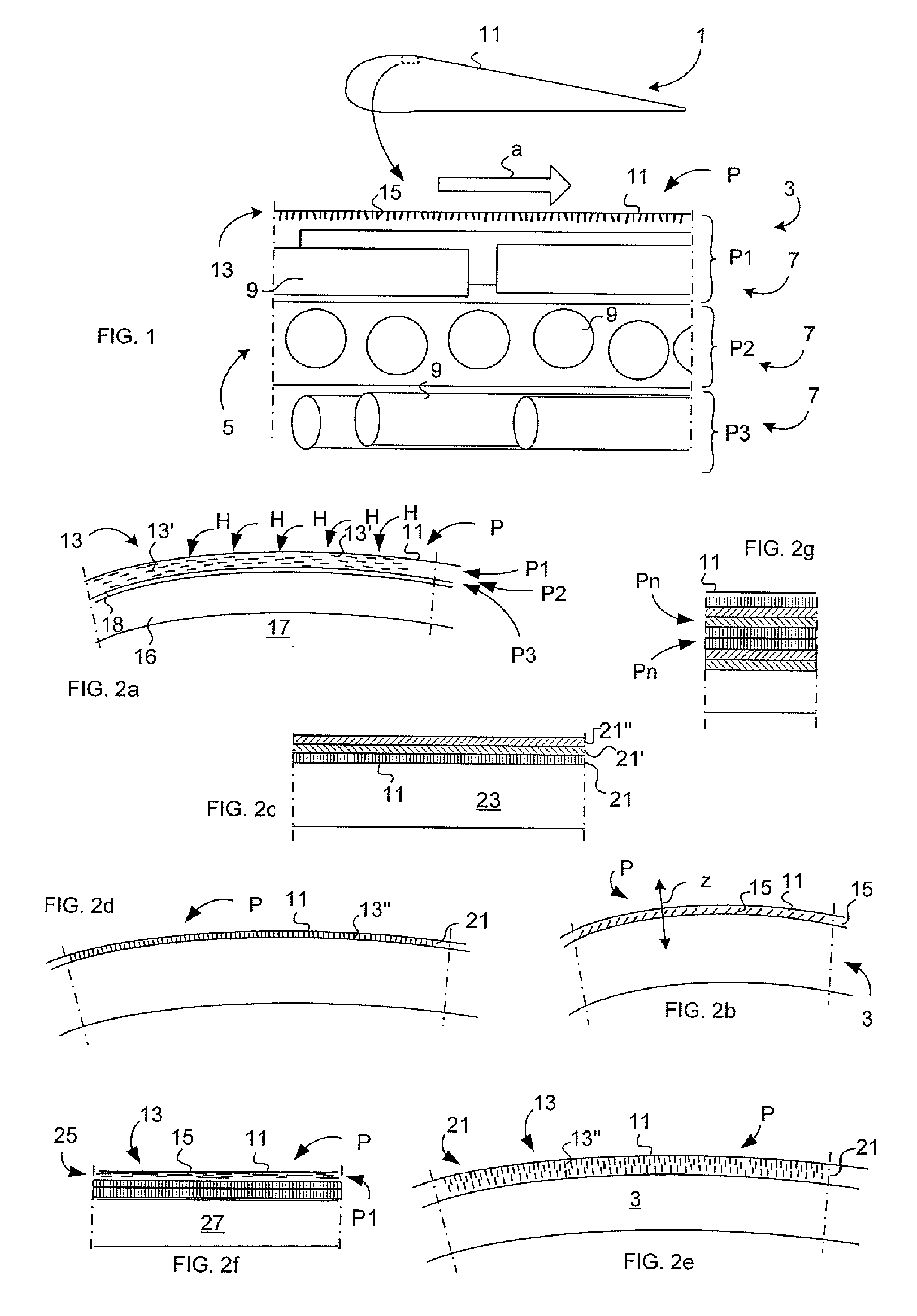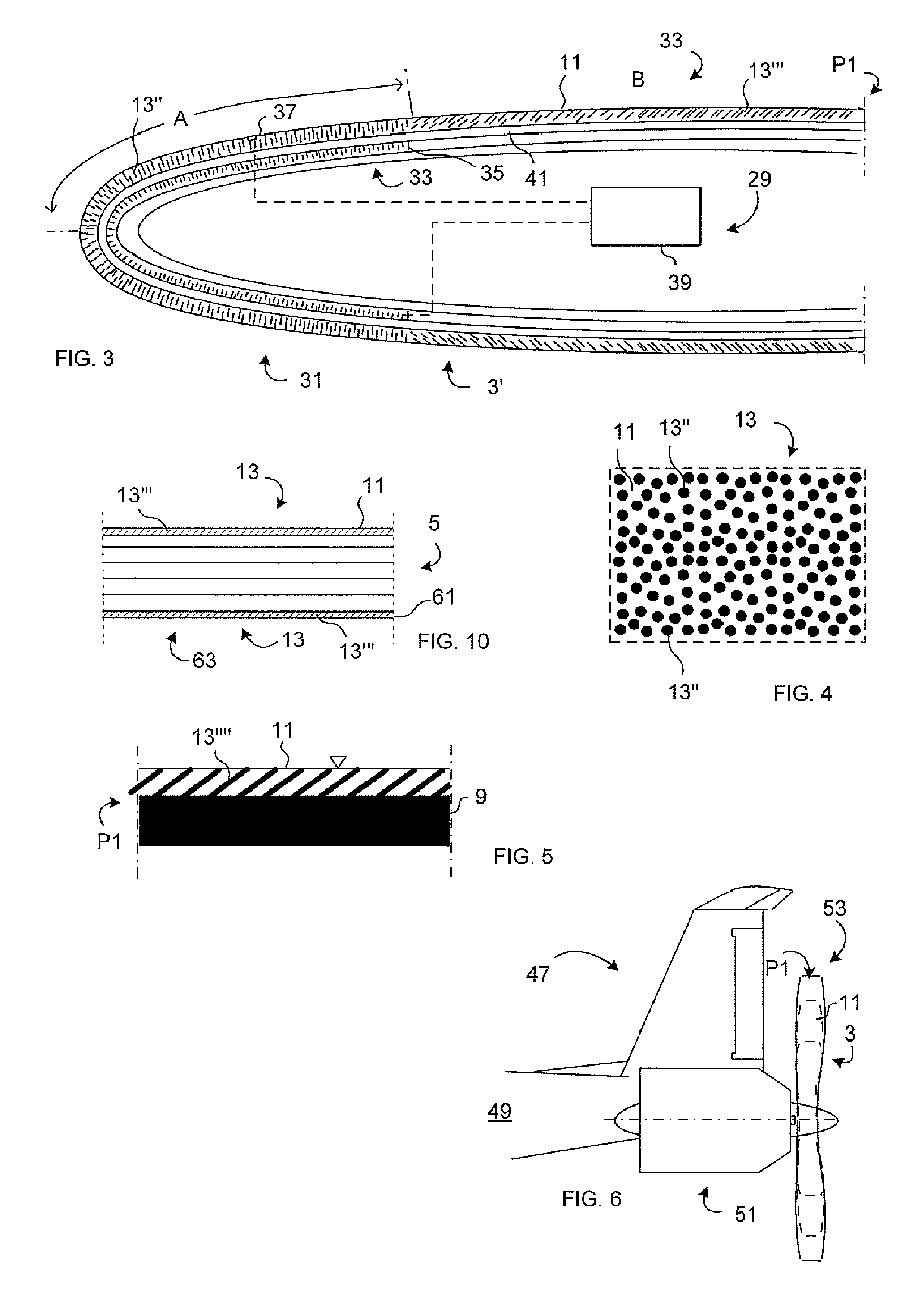Aerodynamic surface with improved properties
a surface and surface technology, applied in the direction of machines/engines, airflow influencers, other domestic articles, etc., can solve the problems of reducing the aerodynamic efficiency of the airframe, so as to achieve less noise and less noise, and enhance the commercial use of the latter
- Summary
- Abstract
- Description
- Claims
- Application Information
AI Technical Summary
Benefits of technology
Problems solved by technology
Method used
Image
Examples
Embodiment Construction
[0065]Hereinafter, embodiments of the present invention will be described in detail with reference to the accompanying drawings, wherein for the sake of clarity and understanding of the invention some details of no importance are deleted from the drawings. Also, the illustrative drawings show nano structures of different types, being illustrated extremely exaggerated and schematically for the understanding of the invention. The conductive nano structures are illustrated exaggerated in the figures also for the sake of understanding of the orientation and the alignment of the conductive nano filaments.
[0066]FIG. 1 illustrates a composite airframe structure 1 having an aerodynamic function. The composite airframe structure 1 corresponds in this first embodiment to a wing of an aircraft (not shown).
[0067]The wing's wing shell 3 is made of a resin matrix, which comprises a laminate 5 of plies 7. Each ply 7 comprises fibres 9 (in the present application also so called large fibres or trad...
PUM
| Property | Measurement | Unit |
|---|---|---|
| length | aaaaa | aaaaa |
| thickness | aaaaa | aaaaa |
| diameter | aaaaa | aaaaa |
Abstract
Description
Claims
Application Information
 Login to View More
Login to View More - R&D
- Intellectual Property
- Life Sciences
- Materials
- Tech Scout
- Unparalleled Data Quality
- Higher Quality Content
- 60% Fewer Hallucinations
Browse by: Latest US Patents, China's latest patents, Technical Efficacy Thesaurus, Application Domain, Technology Topic, Popular Technical Reports.
© 2025 PatSnap. All rights reserved.Legal|Privacy policy|Modern Slavery Act Transparency Statement|Sitemap|About US| Contact US: help@patsnap.com



